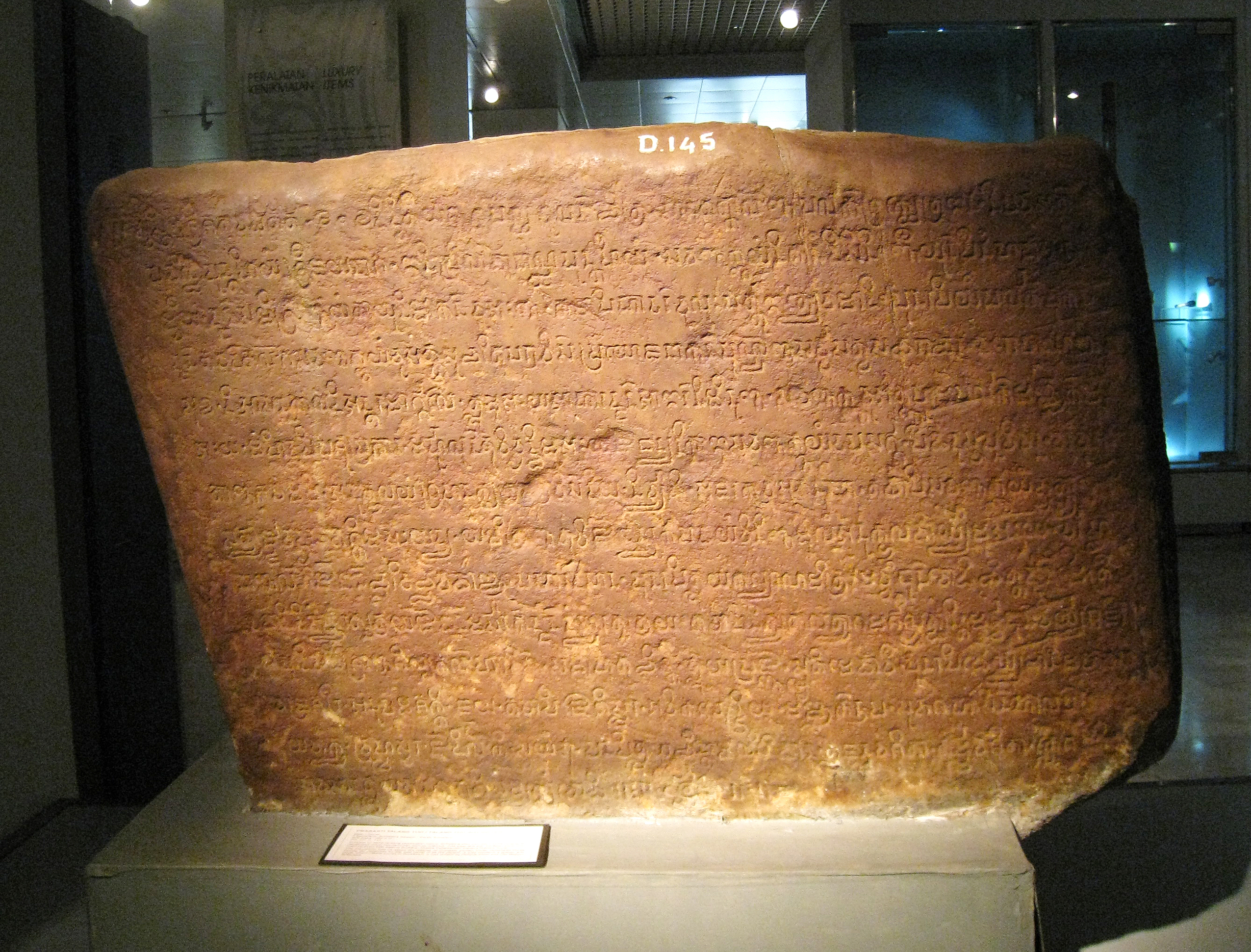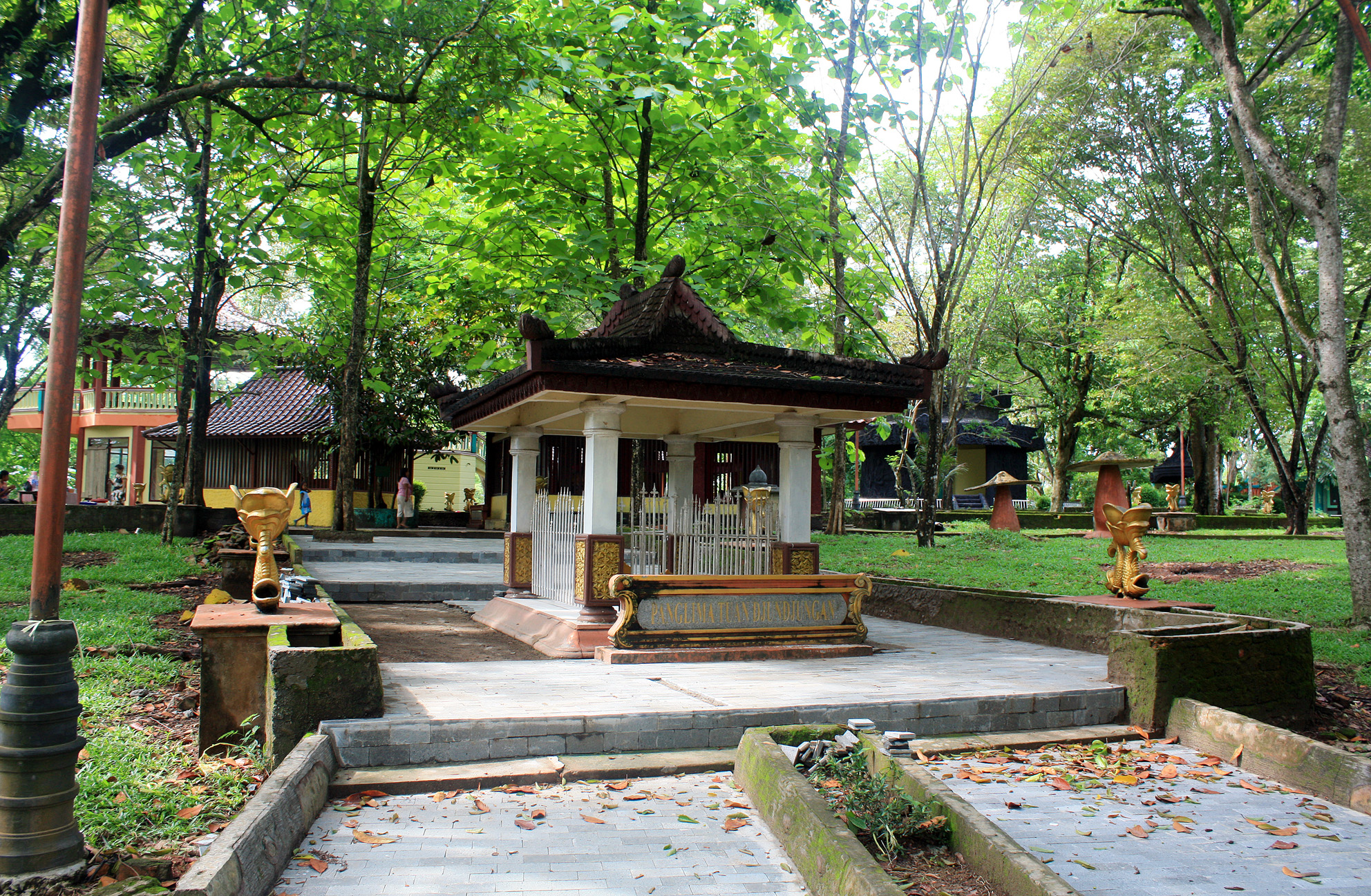Bukit Seguntang on:
[Wikipedia]
[Google]
[Amazon]

 ''Bukit Seguntang'' or ''Bukit Siguntang'' ( English: Seguntang Hill or Siguntang Hill) is a 29–30 metres high small
''Bukit Seguntang'' or ''Bukit Siguntang'' ( English: Seguntang Hill or Siguntang Hill) is a 29–30 metres high small
 Bukit Seguntang is the highest point in Palembang city. The complex is a hill with garden and large trees. On higher grounds within the complex there are some tombs linked by locals to the figures of Malay-Srivijayan royalties and heroes. There are seven Srivijayan figures entombed here:
* Raja Sigentar Alam
* Pangeran Raja Batu Api
* Putri Kembang Dadar
* Putri Rambut Selako
* Panglima Tuan Junjungan
* Panglima Bagus Kuning
* Panglima Bagus Karang
According to
Bukit Seguntang is the highest point in Palembang city. The complex is a hill with garden and large trees. On higher grounds within the complex there are some tombs linked by locals to the figures of Malay-Srivijayan royalties and heroes. There are seven Srivijayan figures entombed here:
* Raja Sigentar Alam
* Pangeran Raja Batu Api
* Putri Kembang Dadar
* Putri Rambut Selako
* Panglima Tuan Junjungan
* Panglima Bagus Kuning
* Panglima Bagus Karang
According to

 ''Bukit Seguntang'' or ''Bukit Siguntang'' ( English: Seguntang Hill or Siguntang Hill) is a 29–30 metres high small
''Bukit Seguntang'' or ''Bukit Siguntang'' ( English: Seguntang Hill or Siguntang Hill) is a 29–30 metres high small hill
A hill is a landform that extends above the surrounding terrain. It often has a distinct summit, and is usually applied to peaks which are above elevation compared to the relative landmass, though not as prominent as Mountain, mountains. Hills ...
located at the northern bank of Musi River and within the vicinity of Palembang
Palembang (, Palembang: ''Pelémbang'', Mandarin: 巨港 (Jùgǎng), Hokkien: 舊港 (Kū-káng), Jawi: ) is the capital city of the Indonesian province of South Sumatra. The city proper covers on both banks of the Musi River in the ea ...
, capital city of South Sumatra
South Sumatra () is a Provinces of Indonesia, province of Indonesia, located in the southeast of the island of Sumatra. The capital and largest city of the province is the city of Palembang. The province borders the provinces of Jambi to the north ...
, Indonesia
Indonesia, officially the Republic of Indonesia, is a country in Southeast Asia and Oceania, between the Indian Ocean, Indian and Pacific Ocean, Pacific oceans. Comprising over List of islands of Indonesia, 17,000 islands, including Sumatra, ...
. It is located around 3 kilometres north from Musi River northern bank and around four kilometres southwest from Palembang city center. The place is considered sacred by the locals and home of many archeological relics believed to be related to Srivijaya
Srivijaya (), also spelled Sri Vijaya, was a Hinduism, Hindu-Buddhism, Buddhist thalassocracy, thalassocratic empire based on the island of Sumatra (in modern-day Indonesia) that influenced much of Southeast Asia. Srivijaya was an important ...
, once a dominating political power around Malacca Strait
The Strait of Malacca is a narrow stretch of water, long and from wide, between the Malay Peninsula to the northeast and the Indonesian island of Sumatra to the southwest, connecting the Andaman Sea (Indian Ocean) and the South China Sea (Pa ...
(6th to 13th century AD). Today the hill holds the title of an archaeological park.
Discovery
In 1920s, aBuddha
Siddhartha Gautama, most commonly referred to as the Buddha (),*
*
*
was a wandering ascetic and religious teacher who lived in South Asia during the 6th or 5th century BCE and founded Buddhism. According to Buddhist legends, he was ...
statue was discovered in this hill. It was discovered in pieces, the head part was discovered first, several months later the body parts were discovered, however the leg part is still missing.
The 277cm-tall statue is made from granite stone, commonly thought to be from the neighboring island of Bangka. However, the existence of an unfinished statue in granite of a seated Buddha (currently in the Palembang Museum) proves that such statues could have been made locally. The statue likely belongs to the Pala period, dating from the late 7th to the early 8th centuries CE. The style was adopted during the Srivijaya
Srivijaya (), also spelled Sri Vijaya, was a Hinduism, Hindu-Buddhism, Buddhist thalassocracy, thalassocratic empire based on the island of Sumatra (in modern-day Indonesia) that influenced much of Southeast Asia. Srivijaya was an important ...
era. Today, the statue is displayed in Sultan Mahmud Badaruddin II Museum, near Kuto Besak fort.
In Seguntang Hill area also found fragments of Boddhisattva statue, a ruin of stupa
In Buddhism, a stupa (, ) is a domed hemispherical structure containing several types of sacred relics, including images, statues, metals, and '' śarīra''—the remains of Buddhist monks or nuns. It is used as a place of pilgrimage and m ...
made of sandstone and brick, fragment of inscription, stone statue of Boddhisattva, statue of Kuwera, and a statue of Buddha Vairocana in seated position complete with ''prabha'' (halo aura) and ''chattra'' (umbrella). The fragment of inscription is called Bukit Siguntang Inscription, mentioned about a great battle that shed a lot of blood upon ''Bhumi Srivijaya
Srivijaya (), also spelled Sri Vijaya, was a Hinduism, Hindu-Buddhism, Buddhist thalassocracy, thalassocratic empire based on the island of Sumatra (in modern-day Indonesia) that influenced much of Southeast Asia. Srivijaya was an important ...
'' which means the Srivijaya
Srivijaya (), also spelled Sri Vijaya, was a Hinduism, Hindu-Buddhism, Buddhist thalassocracy, thalassocratic empire based on the island of Sumatra (in modern-day Indonesia) that influenced much of Southeast Asia. Srivijaya was an important ...
n Land. The inscription also mentioned about a curse for those who had done evil deed.
In the southern side of the hill lays Karanganyar site, where sherds from Tang and early Song
A song is a musical composition performed by the human voice. The voice often carries the melody (a series of distinct and fixed pitches) using patterns of sound and silence. Songs have a structure, such as the common ABA form, and are usu ...
dynasties were found. Two stone inscriptions dated back to seventh century AD were found in its vicinity in 1920s.Wolters, O.W. 1986. Restudying Some Chinese Writings on Sriwijaya. ''Indonesia'' 42:1-41.
Tomb complex
 Bukit Seguntang is the highest point in Palembang city. The complex is a hill with garden and large trees. On higher grounds within the complex there are some tombs linked by locals to the figures of Malay-Srivijayan royalties and heroes. There are seven Srivijayan figures entombed here:
* Raja Sigentar Alam
* Pangeran Raja Batu Api
* Putri Kembang Dadar
* Putri Rambut Selako
* Panglima Tuan Junjungan
* Panglima Bagus Kuning
* Panglima Bagus Karang
According to
Bukit Seguntang is the highest point in Palembang city. The complex is a hill with garden and large trees. On higher grounds within the complex there are some tombs linked by locals to the figures of Malay-Srivijayan royalties and heroes. There are seven Srivijayan figures entombed here:
* Raja Sigentar Alam
* Pangeran Raja Batu Api
* Putri Kembang Dadar
* Putri Rambut Selako
* Panglima Tuan Junjungan
* Panglima Bagus Kuning
* Panglima Bagus Karang
According to Malay Annals
The ''Malay Annals'' ( Malay: ''Sejarah Melayu'', Jawi: ), originally titled ''Sulalatus Salatin'' (''Genealogy of Kings''), is a literary work that gives a romanticised history of the origin, evolution and destruction of the Malacca Sultanat ...
manuscript, Bukit Seguntang is believed to be the place where a demi-god hero being named Sang Sapurba descended to earth. He later become the ancestor of Malay kings that ruled kingdoms in Sumatra, Western Borneo, and Malay Peninsula. Bukit Seguntang was revered as the part of Mahameru sacred mountain in Hindu-Buddhist mythology. It is considered sacred because it was believed as the homeland of Malay people
Malays ( ; , Jawi: ) are an Austronesian ethnoreligious group native to eastern Sumatra, the Malay Peninsula and coastal Borneo, as well as the smaller islands that lie between these locations. These locations are today part of the countries ...
. The kings that ruled Malacca Sultanate
The Malacca Sultanate (; Jawi script: ) was a Malay sultanate based in the modern-day state of Malacca, Malaysia. Conventional historical thesis marks as the founding year of the sultanate by King of Singapura, Parameswara, also known as I ...
was said to be the descendants of Sang Sapurba.
Notes
References
* Ahmad Rapanie, Cahyo Sulistianingsih, Ribuan Nata, "Kerajaan Sriwijaya, Beberapa Situs dan Temuannya", Museum Negeri Sumatera Selatan, Dinas Pendidikan Provinsi Sumatera Selatan. {{coord, 2, 59, 50, S, 104, 43, 32, E, display=title Palembang Srivijaya Buddhism in Indonesia Geography of South Sumatra Archaeological parks Buildings and structures in South Sumatra Tourist attractions in South Sumatra